
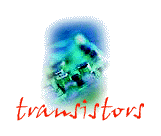


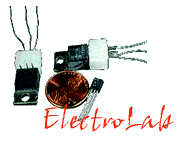


![]()
BASIC
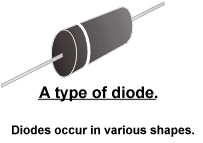 As the name suggests, a diode is made up of two (di) electrodes.
The specialty of a diode lies in the fact that one electrode is positively charged and the
other is negatively charged. In case of semiconductor (or junction) diodes, the positive
part is made up of spaces lacking negatively charged electrons and is called the
p-region. This p-region can be obtained by adding specific substances to the
semiconductor crystal. (Please refer to Introduction to Semiconductors for details). Similarly, the negative region, called n-region,
consists of spaces with excess of negatively charged electrons. As the name suggests, a diode is made up of two (di) electrodes.
The specialty of a diode lies in the fact that one electrode is positively charged and the
other is negatively charged. In case of semiconductor (or junction) diodes, the positive
part is made up of spaces lacking negatively charged electrons and is called the
p-region. This p-region can be obtained by adding specific substances to the
semiconductor crystal. (Please refer to Introduction to Semiconductors for details). Similarly, the negative region, called n-region,
consists of spaces with excess of negatively charged electrons. |
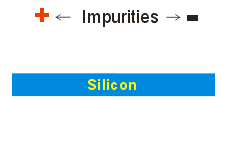
Since conventional current flows from positive to negative electrodes, the diodes help in maintaining the direction of the electric current. This function is of tremendous use in transistor circuits, which are in fact, two circuits combined together.
Diodes may be considered to be in two states when in a closed circuit:
1) Forward biased:
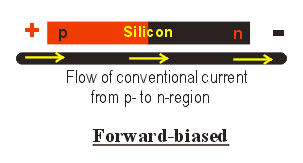
This simply means that the diode is arranged in the direction of the current. Hence the current flows from positive to negative part inside the diode
2) Reverse biased:
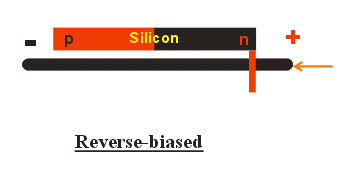 |
This term denotes that the diode is arranged in a manner so that the conventional current, if it were possible, should move from negative part of diode to positive part. However, as it is not possible, practically no current flows in this situation. |
ADVANCED